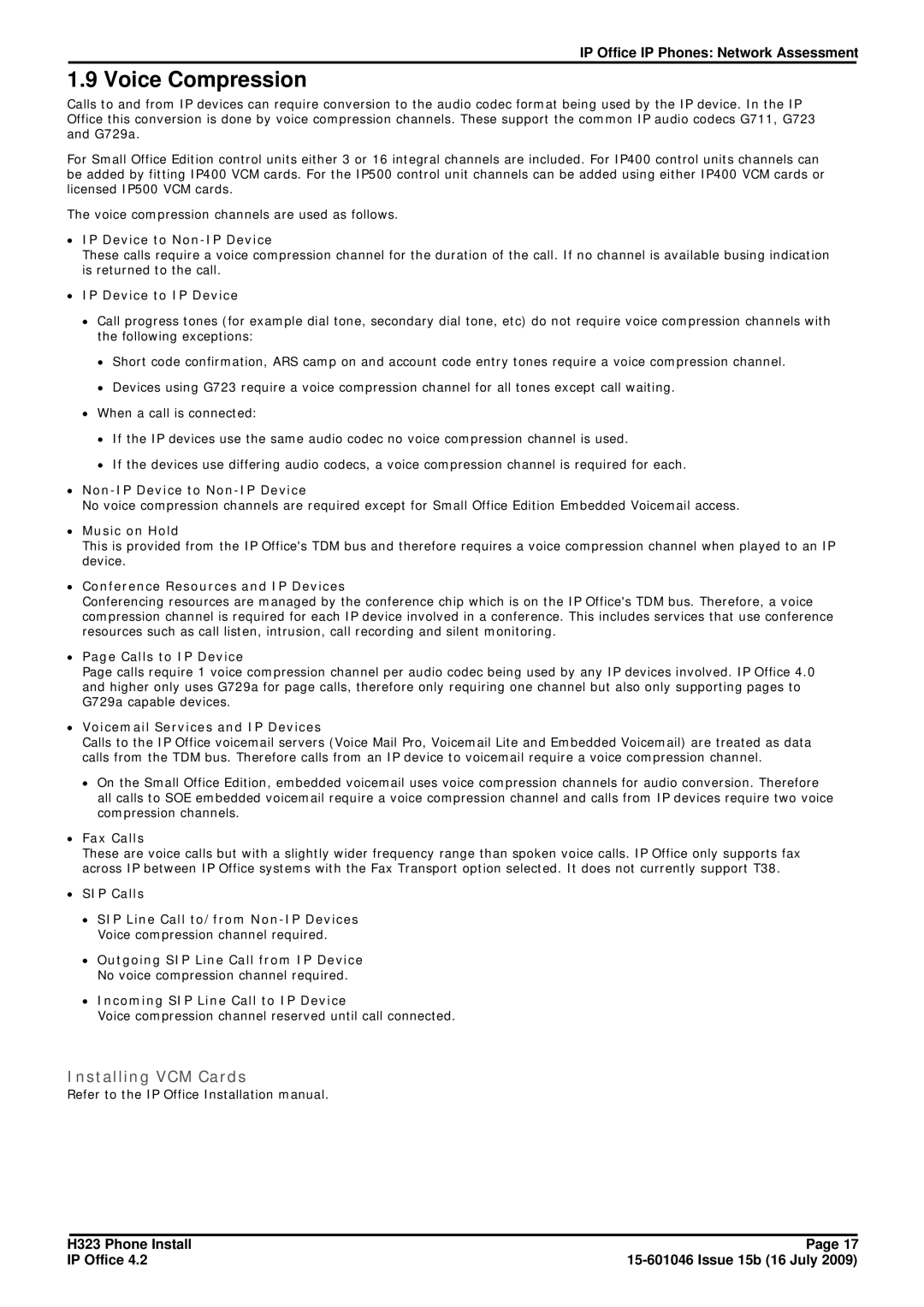
IP Office IP Phones: Network Assessment
1.9 Voice Compression
Calls to and from IP devices can require conversion to the audio codec format being used by the IP device. In the IP Office this conversion is done by voice compression channels. These support the common IP audio codecs G711, G723 and G729a.
For Small Office Edition control units either 3 or 16 integral channels are included. For IP400 control units channels can be added by fitting IP400 VCM cards. For the IP500 control unit channels can be added using either IP400 VCM cards or licensed IP500 VCM cards.
The voice compression channels are used as follows.
∙IP Device to Non-IP Device
These calls require a voice compression channel for the duration of the call. If no channel is available busing indication is returned to the call.
∙IP Device to IP Device
∙Call progress tones (for example dial tone, secondary dial tone, etc) do not require voice compression channels with the following exceptions:
∙Short code confirmation, ARS camp on and account code entry tones require a voice compression channel.
∙Devices using G723 require a voice compression channel for all tones except call waiting.
∙When a call is connected:
∙If the IP devices use the same audio codec no voice compression channel is used.
∙If the devices use differing audio codecs, a voice compression channel is required for each.
∙Non-IP Device to Non-IP Device
No voice compression channels are required except for Small Office Edition Embedded Voicemail access.
∙Music on Hold
This is provided from the IP Office's TDM bus and therefore requires a voice compression channel when played to an IP device.
∙Conference Resources and IP Devices
Conferencing resources are managed by the conference chip which is on the IP Office's TDM bus. Therefore, a voice compression channel is required for each IP device involved in a conference. This includes services that use conference resources such as call listen, intrusion, call recording and silent monitoring.
∙Page Calls to IP Device
Page calls require 1 voice compression channel per audio codec being used by any IP devices involved. IP Office 4.0 and higher only uses G729a for page calls, therefore only requiring one channel but also only supporting pages to G729a capable devices.
∙Voicemail Services and IP Devices
Calls to the IP Office voicemail servers (Voice Mail Pro, Voicemail Lite and Embedded Voicemail) are treated as data calls from the TDM bus. Therefore calls from an IP device to voicemail require a voice compression channel.
∙On the Small Office Edition, embedded voicemail uses voice compression channels for audio conversion. Therefore all calls to SOE embedded voicemail require a voice compression channel and calls from IP devices require two voice compression channels.
∙Fax Calls
These are voice calls but with a slightly wider frequency range than spoken voice calls. IP Office only supports fax across IP between IP Office systems with the Fax Transport option selected. It does not currently support T38.
∙SIP Calls
∙SIP Line Call to/from
∙Outgoing SIP Line Call from IP Device No voice compression channel required.
∙Incoming SIP Line Call to IP Device
Voice compression channel reserved until call connected.
Installing VCM Cards
Refer to the IP Office Installation manual.
H323 Phone Install | Page 17 |
IP Office 4.2 |
